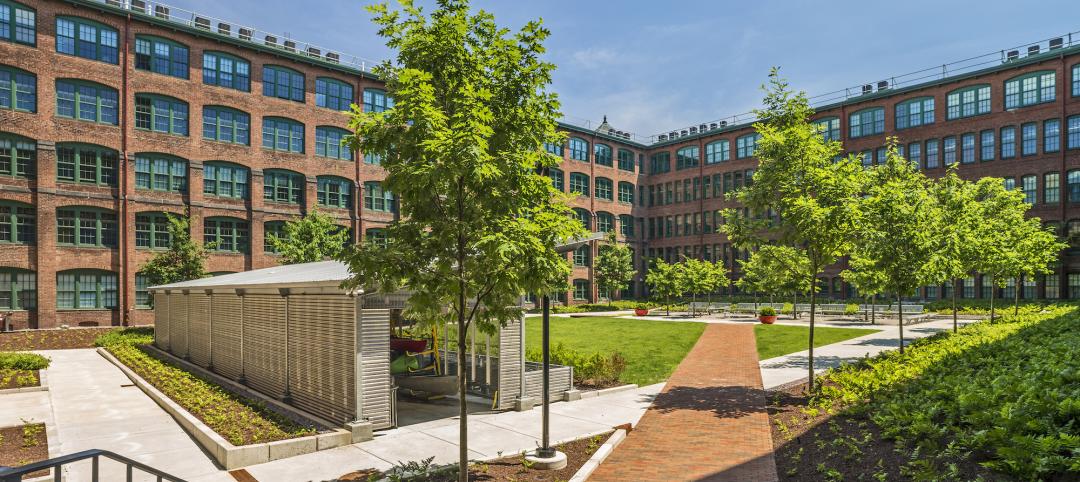Solutions for cladding performance and supply issues
This course covers design considerations and cladding assembly choices for creating high-performance building envelopes — a crucial element in healthy, energy-efficient buildings.
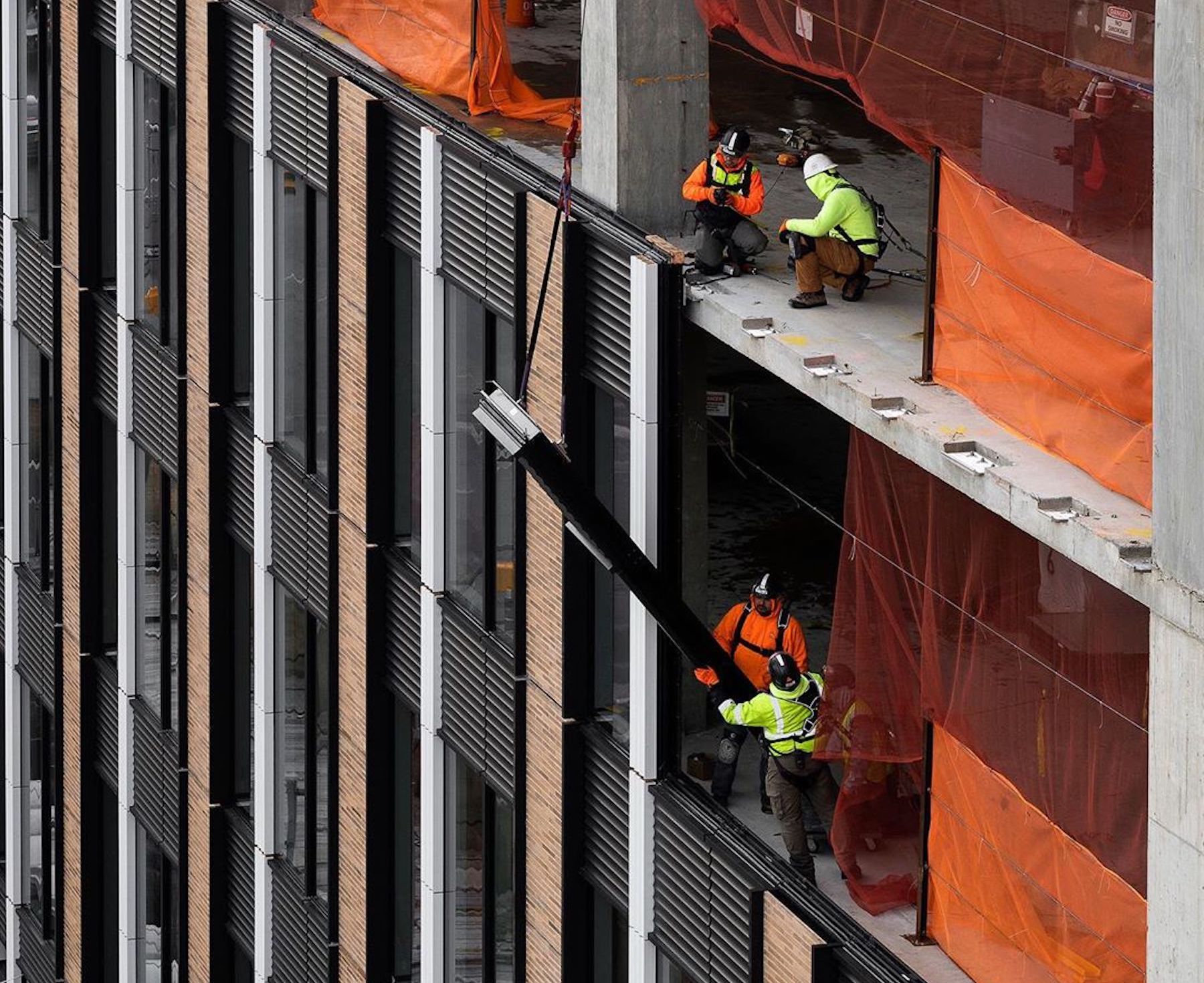
From a distance, today’s building innovations in cladding performance, aesthetics, and construction appear unconstrained and quite varied. Material mixing is creating newly expressive façades, and performance standards for solar heating, air infiltration, and moisture management are more effective than ever before. Increased use of rainscreens and new fabrication innovations, including engineered precast systems, contribute to surprising new enclosure designs backed by better solutions to ensure continuous insulation (CI) and properly installed and structurally supported air barriers.
Technically, today’s building teams are producing passive designs and sustainable solutions that are more effective than ever, often with renewable materials that better withstand climate stressors while committing less embodied carbon.
It sounds good. Yet, just as this is happening, building teams are facing unprecedented price pressures and supply chain issues that necessitate rapid, creative solutions. Where value engineering has been a dominant solution path of last resort in past decades, post-pandemic cladding selection is all about making do with less, anticipating shortages, and collaborating on clever downstream substitutions.
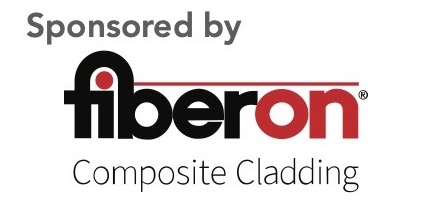
First, managing project costs is a dynamic, ongoing battle. Construction materials jumped over 20% on average from 2021 to 2022, according to Associated General Contractors (AGC) of America, which reported that “multiple increases have taken effect for metals, fuel, and trucking, while supply chains have become even more snarled.” Examples of base products commonly used in cladding systems include copper (24.4% YOY cost increase), architectural coatings (20.3%), insulation materials (17.8%), and plywood sheathing and exterior siding products more generally, both at 22.5%. Behind the double-digit price increases are challenges for many material suppliers, including reduced availability and price hikes for energy and fuels, constituent materials, and freight itself. “At some point, projects no longer pencil out as contractors have to raise bid prices to keep pace with the rapid inflation in materials costs,” said Stephen E. Sandherr, CEO of AGC.
Cladding supply chain solutions
The initial response has been chaos for cladding specifiers and subcontractors alike. Owners and developers have postponed project starts to match exterior system delivery timeframes. Construction management (CM) firms have devised inventive project staging and sequencing to realign preconstruction activities or speed up certain trades while cladding deliveries catch up, according to global developer McLaren. Other project teams report using a stop-start approach on multiple project sites, both priming the project pipeline while also staging strategically for pending cladding product deliveries.
During the pandemic, owner-operators with ambitious building programs like hotel company citizenM have stocked up on modular construction systems with integrated façade assemblies, completing new hotels in Los Angeles and Seattle recently, among others. Using a centralized business model, the global company created a backlog of the interchangeable and deployable, stackable units within structural steel cages. According to the CM Mortenson, which has built several of the hotels with architects Concrete, Baskervill, and Gensler, as well as engineers like Arup, integrating the “modern and luxurious modular room pods” into the building designs also slashes construction waste by up to 60% says Mortenson’s Director Of Project Development, Nathan Jenkins. He says the approach cuts construction duration by three to four months, compared to traditional onsite methods.
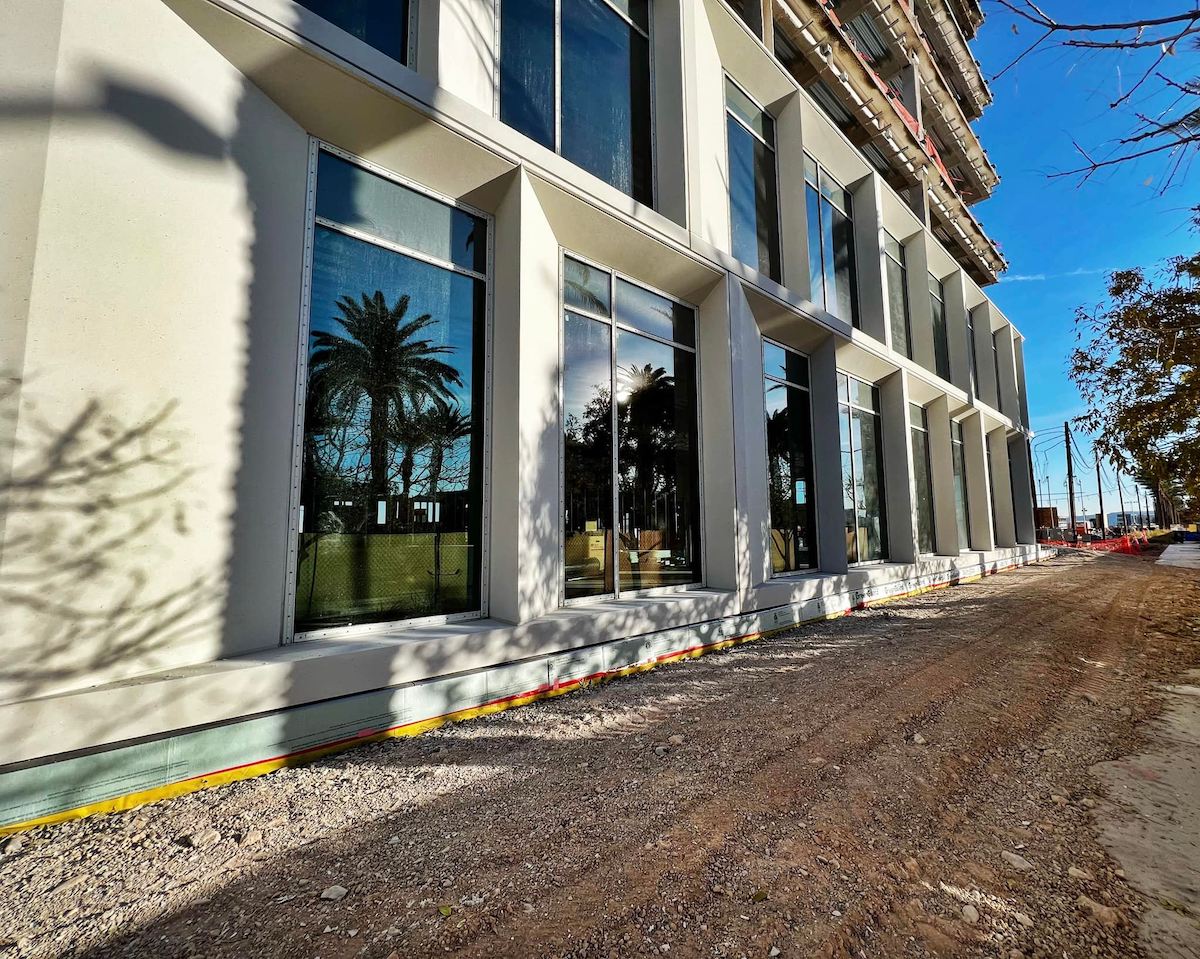
On the supply end, some façade system manufacturers resist bidding on projects unless they’ve received iron-clad purchase orders. Others, according to Capstone, a financing company active in the construction sector, use price collars or put “expiration dates” on bids so they “have the opportunity to rebid if the bid validity date passes to account for the higher cost of goods.” Another option that has been rare in the past, stipulating inflation terms in contract language, can benefit general contractors and at-risk CMs, as well as the suppliers involved. “Construction cost inflation has not exceeded 5% for over three decades, so many contractors do not have experience in an inflationary environment,” according to Capstone. “Adding a few percentage points to bids for inflation won’t protect you sufficiently in this type of environment either.”
Stockpiling and speeding envelopes
Building teams with multiple projects or major capital programs are stockpiling materials they use frequently or are making “ghost orders” not necessarily related to a particular project. Suffolk Construction has successfully warehoused materials recently to keep projects on schedule, while other contractors are reporting related shortages of storage facilities, leading the teams to erect temporary laydown facilities. Taking a proactive posture has helped contractor XL Construction, which self-performs some of its work, to deal with reported lead times of up to a year for curtain wall systems and precast wall cladding.
Building design teams are regrouping and looking for more readily available materials. While fiberglass resin shortages slowed swimming pool construction last year, sales of glass-fiber-reinforced concrete (GFRC) grew, boosting architectural precast suppliers like Willis Construction. Projects under way include 1700 Pavilion in downtown Summerlin, Nev., a Howard Hughes Corp. office building to open this fall. Designed by architect Hart Howerton and being built by GC Whiting Turner, the building features an innovative, light-colored cladding of preglazed and preinsulated GFRC panels.
The lightweight cladding panels minimize structural loads, which can hasten framing and connection deliveries, and they can be “prefabricated in advance while the foundation and structure are being built,” according to another GFRC maker, Stromberg Architectural. “Cladding with GFRC panels can often eliminate the need for scaffolding because the panels are lifted by crane and then attached from inside the building,” regardless of weather, adds the Texas-based supplier.
Craned applications hold wide appeal in this tight market, according to owner-developers like nonprofit senior community Harbor’s Edge in Norfolk, Va. Their project team—including contractor W.M. Jordan and architecture firms three and Clark Nexen—responded to developer and CEO Neil Volder’s conception of a 24-story high-rise expansion, River Tower, with an exterior façade system melding brick, masonry, and glass that could be erected quickly and with a crane, rather than system scaffolding. Local precast manufacturer Smith-Midland produced the SlenderWall composite cladding panels offsite in two-story sections with windows preinstalled, says Carl S. Ede, AIA, LEED AP, Principal and Senior Designer with three, the Dallas-based firm. About 66% lighter than traditional 6-inch-thick precast and with better thermal performance, the opaque wall sections integrate a two-inch-thick concrete panel on a frame of galvanized steel studs backed with closed-cell foam insulation. Less concrete means lower embodied carbon, too, say suppliers.
Attached to the building frame with all-concrete floor slabs—a better choice acoustically between floors to mask footfall and other noise, says three’s Ede—the mixed-material system with brick, masonry, and glass allows for articulated transitions such as banding across glass areas that echoes Norfolk’s portside context, yet can be hoisted into place quickly in two-floor sections. The only tradeoff is crane access and operations, he adds, which building teams must consider in site staging and construction decisions.
How to master rainscreens
For another high-rise, a new 35-story glass tower in Boston for Raffles set to open this year, the use of small, portable crawler or creeper cranes allows smooth construction progress in spite of a constrained urban site. Built with a carefully tuned, unitized glass curtain wall system specifically to allow this fast, effective assembly process with the moveable cranes hanging off the structure, the Back Bay-area project for Raffles Hotels & Resorts, part of AccorHotels, brings together Saunders Hotel Group and developer The Noannet Group for the U.S. debut of the brand’s hotel and residential concept. The building team of Suffolk Construction and The Architectural Team, along with structural engineers McNamara Salvia, resolved the tower’s cantilever structure atop a dense field of six-foot-wide caissons tied by steel plate girders, all supporting the tower with 147 guestrooms and 146 residences serviced by a program of extensive amenities.
The new Boston tower, adjacent to the city’s most iconic tall structures, melds varied glass specifications in response to its multiple uses and performance goals for a unique expression. Other project cladding approaches, by contrast, mix materials and construction types for not only aesthetics but also to help deal with cost inflation, supply issues, and construction scheduling.
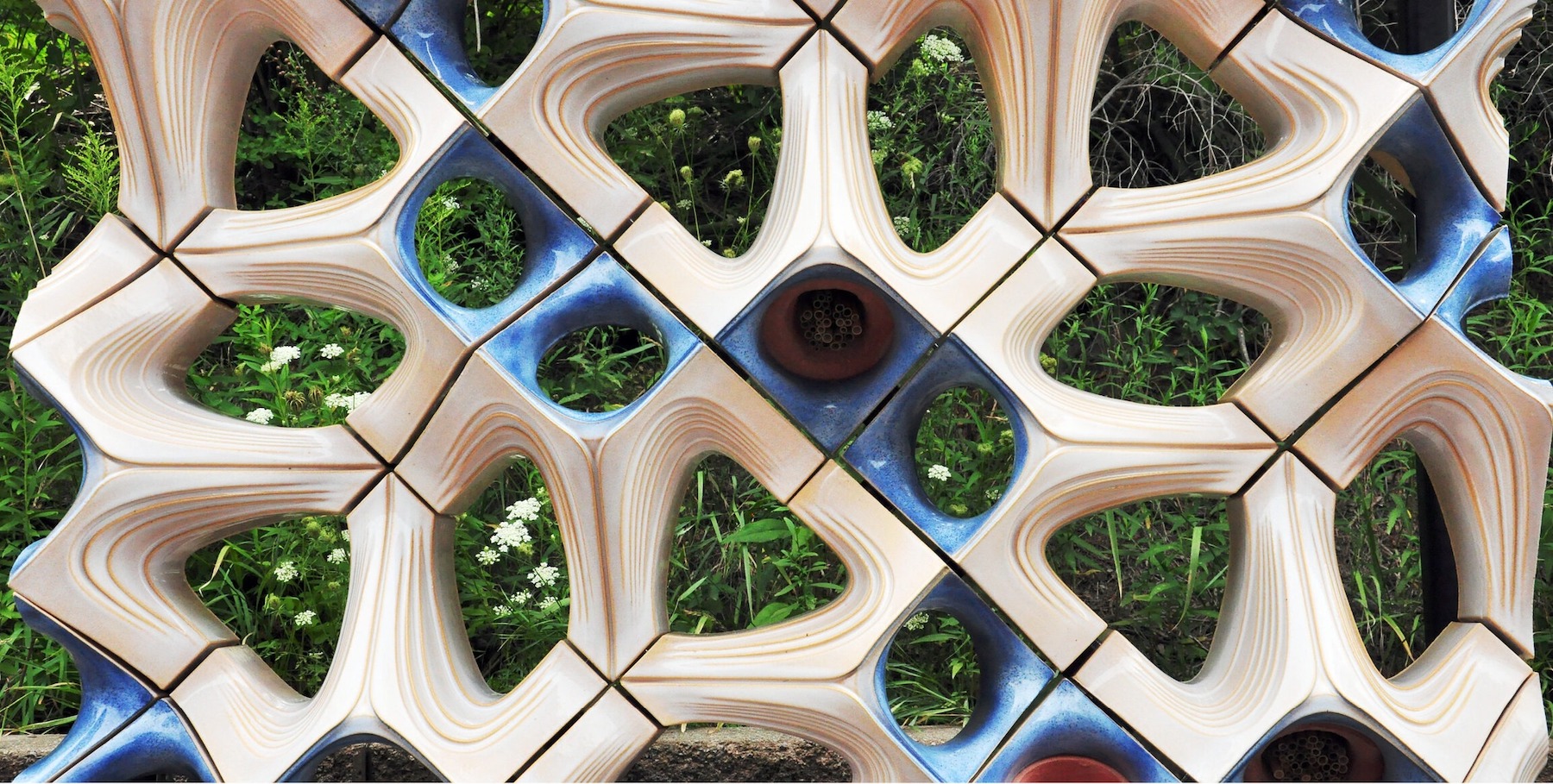
Among the most prevalent trends is an expanding use of rainscreens, says the Rainscreen Association in North America, founded in 2020. “Over the last two decades, the building science community has pushed exterior wall assembly performance to the front of the conversation regarding overall building performance,” according to the trade group and technical resource, which defines a rainscreen as “an assembly applied to an exterior wall that consists of, at minimum, an outer/inner layer and a cavity between them sufficient for the passive removal of liquid water and water vapor.” Rainscreen systems also incorporate insulation, continuous air barriers for air-tightness control, and vapor barriers or retarders for diffusion control, “a balance of wetting versus drying for the whole assembly.”
With constrained supplies for some components, building teams are turning to rainscreen outer layers made with readily available composites of stone, wood fiber, or plastics—many of them drawing from waste streams. Examples include composite panels such as Fiberon, a substitute for thermally modified timbers or other wood panels that might be harder to source in some areas. The composite is made from locally sourced recycled plastic and captured waste wood fiber, specifying approximately 94% pre- and post-consumer recycled content. In 2021, makers of building products had been facing material shortages for certain plastics and resins, though raw material makers pushed to increase production, according to plastics industry sources.
Similarly, other rainscreen cladding products such as stone composites have been in good supply. These engineered materials include panels made from fiberglass-reinforced polymer composites with a crushed limestone core, for example, and some are treated with electron-beam or EB technology and acrylic resins to produce a range of smooth, water-impermeable finishes that stand up to ultraviolet and corrosive environments. One Norwegian manufacturer, Steni, produces a line of stone composite panels with a surface of aggregated natural stones. Produced in different grades of coarseness, carefully calibrated composites of this type have a relatively low carbon footprint and are highly stable, resisting impact and water and vapor diffusion—basically, moisture-proof. Also of interest to designers, stone-based façade panels are flexible and so can be curved and radiused for organic building shapes.
Strength and resiliency is a benefit of the wood-look plastic composites as well, offering “high flexural strength, which translates to maximum protection in severe weather conditions,” according to Peter Kotiadis, VP of Product Development at Fiberon. The material class is considered effective for open-joint rainscreens, which require not only highly durable materials, but also carefully detailed envelope installation.
For the ventilation gap, for example, “Smaller spaces behind the cladding outperform larger spaces because the pressure equalization is more equal between the face of the cladding and the open joint behind the cladding in a smaller space behind the cladding than a larger space behind the cladding,” according to Joe Lstiburek, an ASHRAE Fellow and Principal of Building Science Corporation.
Terra-cotta and cladding tech
With proper material choice is critical, cladding systems including rainscreens can effectively manage moisture and mitigate damage to residential and commercial structures. They also open up opportunities for more sustainable and biophilic façades. These include ways to create or extend ecosystems into the built environment, a trend that has gone from landscapes to planted roofs to other interfaces between the outside world and interior environments. Researchers led by the Museum of Natural History in Paris, for example, studied the ecological drivers of vegetated façades and found they “offer a great potential to enhance urban biodiversity.”
Beyond the cladding systems considered in that study—those with climbing plants, felt layers, or substrate modules such as suspended planters—new ideas in habitat are growing with unlikely materials, such as the terra-cotta collaboration led by Spencer Lapp, AIA, an Associate with CookFox, and Andre Parnther and Spring Wu, LEED AP, respectively, an Associate and a Façade Engineer with Buro Happold, and manufacturer Boston Valley Terra Cotta. The team devised a “modular system of slip-cast pods,” says the company, adding: “Each module is shaped to occupy a specific function in the local ecosystem: as bird nests, with proper air flow and drainage; as bee habitats, protected from the elements; and as planters, with a bottom-watering system and overflow drain.”
The larger base modules—made with a high-fired and high-grogged ceramic that could also be press-molded for large-scale production—receive micro-habitat pots for varied uses. “This clay body is engineered to resist freeze thaw cycles, minimize shrinkage during fabrication, and is tested for the rigors inherent in façade applications,” according to the building team. “The micro-habitat pods are a slip-cast, low-fired clay body that allows for water permeability to support each pod’s program.” Custom glazes and pigmented clays called engobes created for this cladding system offer a variety of colors, sheens, and opacities for future project teams.
Not surprisingly, both CookFox and Buro Happold have prior experience working with terra-cotta for urban façades, which has seen a resurgence in recent years in multifamily, mixed-use, cultural, and institutional projects. Examples by others include the new One Essex Crossing, the residential component of a major, six-acre mixed-use development in New York City focused on health and wellness, with “a contextually-inspired façade weaving together panels of warm brick and Italian terra cotta.” Built by Triton Construction and designed by CetraRuddy for developer Delancey Street Associates, the façades reveal a sunlit suite of amenities and an expansive garden.
Availability of the material is one benefit, according to architect Ede’s firm three in Texas: “Terra-cotta panels are relatively accessible and transportable, so products made around the world, from Mexico to China to Europe, have boosted availability during recent supply logjams, which could be contributing to a more recent resurgence in interest.” On the other hand, terra-cotta is heavy and relatively costly, says San Francisco-based Lada Kocherovsky, AIA, past president of the city’s CREW chapter and Principal with Page & Turnbull, an authority on new architectural design and preservation. “The use of terra cotta as ornamental material has a fascinating history, and contemporary applications are seeing renewed interest lately, including terra-cotta rainscreens in the Bay Area over recent years,” she says. “It’s beautiful and durable, though the pure cost of it, the challenges of installation, and the added weight on the structure proves to be cost prohibitive on many projects.”
Filtering and lightness
Another option for lower-weight and more economical façade systems is the insulated metal panel (IMP), which benefits from a generally robust supply and new ideas in design and constructability. Bringing improved performance and reduced environmental impact, IMPs offer tunable insulating qualities and desirable solar reflectance and infrared emittance properties that help building owner-operators lower peak energy demand and cut total energy usage.
On top of that, metal is a highly resilient, durable cladding with panel joints shaped specifically for rainwater control effectiveness. So while IMPs can be used as a backup system behind a traditional cladding, the exterior layer can be omitted in most applications, says Building Science Corp’s Lstiburek. “The exterior metal face of the panel protects the remainder of the assembly from exposure to ultraviolet radiation, protects the remainder of the assembly from physical damage, and typically satisfies aesthetic requirements for the application,” according to Lstiburek. “The exterior face of the insulated metal panel system integrated with drained joint assemblies addresses the rainwater control aspects of traditional cladding. The exterior face of the insulated metal panel system becomes the cladding.”

Effective, integral barriers are often a primary goal for enclosure design, as architect Zack Aders, AIA, LEED AP, with the nonprofit project leader New York City Economic Development Corporation, explains: “We have used passive strategies to create a tightly sealed, well-insulated envelope with high performance glazing to reduce heating and cooling loads, which is key to achieving a net positive energy building.” He adds that a whole-building blower door test at the end of construction is valuable to confirm expectations are met for air tightness.
Yet a more recent and perhaps more radical direction in building envelopes has emerged that considers the exterior less as a barrier and more as a filter, similar to natural integuments or entire organisms that open and close to fresh air, to direct solar warming in winter, and even to controlled moisture and bulk water.
“As structural engineers, it has been satisfying to see the results of the structural thinness of a single-layer solution, which in one case allows the gridshell to become a membrane between interior and exterior—rather than a barrier,” according to structural engineer Craig Schwitter, a Senior Partner and Global Board Chair for Buro Happold. “This environmental filter balances forces that make up the experience and the environment, creating comfort and possibility even as it engenders a sense of enticement, wonder and delight.”
Commissioning + Cladding = Confidence
To make cladding choices that promise longevity, sustainability, and optimized return on investment, more building teams are incorporating a commissioning process.
“Commissioning has been key tool for public projects to insert accountability in meeting design criteria,” says Zack Aders, AIA, LEED AP, with the nonprofit project leader New York City Economic Development Corporation. “Envelope commissioning in particular is critical to ensure that weather-resistive barriers are applied correctly and continuously and that air sealing details perform as designed.”
According to engineering firm Simpson Gumpertz & Heger, enclosure commissioning is outlined in both LEED and ASTM E2813 to orient building teams. “To be truly effective, building enclosure commissioning should begin in the predesign phase and continue through the design, preconstruction, and construction phases of the project,” says the firm, which holds a specialty in façade engineering. ASTM E2813, for example, requires commissioning to begin during design development at minimum, and for better, enhanced commissioning, it should start in schematics.
Beginning-to-end is the mantra for enclosure excellence: A key part of the process for enhanced commissioning, for example, is to plan for oversight during construction. This vastly improves the resolution of such challenges as constructability, material compatibility, and full continuity of insulation, or CI, and weather-resistive barriers, or WRBs.
“Verifying these details as the building is being constructed allows us to address any gaps before the walls are closed up, helping the team avoid costly rework,” says Aders.
More Campus Related Content
Structural
Waterproofing deep foundations for new construction
Below-grade waterproofing systems can be critical features of building enclosure design, particularly when the structure has a deep foundation. As…
 course credit: 1.0 AIA LU/HSW
course credit: 1.0 AIA LU/HSW
Interior design/Interior architecture
Performance-based facilities for performing arts boost the bottom line
New technologies, innovations, and tools are opening doors for building teams interested in better and yet less-expensive performing arts facilities…
 course credit: 1.0 AIA LU
course credit: 1.0 AIA LU
Exterior
For the Multifamily Sector, Product Innovations Boost Design and Construction Success
It seems fitting that wider adoption of thin-shell concrete, a technology popular worldwide but somehow unfavored in the U.S., has resulted from the…
 course credit: 1.0 AIA LU/HSW
course credit: 1.0 AIA LU/HSW
Provided By: BD+C
Exterior
Fire safety considerations for cantilevered buildings [AIA course]
Cantilevered buildings seem to be everywhere in New York City these days, as developers and architects strive to maximize space, views, and natural…
 course credit: 1.0 AIA LU/HSW
course credit: 1.0 AIA LU/HSW
Provided By: BD+C
Exterior
4 steps to a better building enclosure
Dividing the outside environment from the interior, the building enclosure is one of the most important parts of the structure. The enclosure not…
 course credit: 1.0 AIA LU/HSW
course credit: 1.0 AIA LU/HSW
Provided By: BD+C
With affordability and innovation for all: Multifamily housing ideas break barriers
With a growing need for multifamily housing solutions at all income levels, the U.S. market is seeing a proliferation of inventive projects.…
 course credit: 1.0 AIA LU/HSW
course credit: 1.0 AIA LU/HSW
Provided By: BD+C
Exterior
Metal cladding trends and innovations
Metal cladding is on a growth trajectory globally. This is reflected in rising demand for rainscreen cladding, which market research firm VMR values…
 course credit: 1.0 AIA LU
course credit: 1.0 AIA LU
Provided By: BD+C
Structural
Flood protection: What building owners need to know to protect their properties
Historically, flooding is one of the costliest natural disasters in the United States on an annual basis. Flood Insurance Rate Maps (FIRMs) attempt…
 course credit: 1.0 AIA LU/HSW
course credit: 1.0 AIA LU/HSW
Provided By: BD+C
Multifamily housing/Apartments/Condominiums
Urban housing revival: 3 creative multifamily housing renovations
Bruner/Cott’s AIA award-winning inaugural project, the 1974 transformation of Boston’s expiring Chickering & Sons Piano Factory into the Piano…
 course credit: 1.0 AIA LU
course credit: 1.0 AIA LU
Provided By: BD+C
Structural
Steel structures offer faster path to climate benefits
Faster delivery of buildings isn’t always associated with sustainability benefits or long-term value, but things are changing. An instructive case is…








